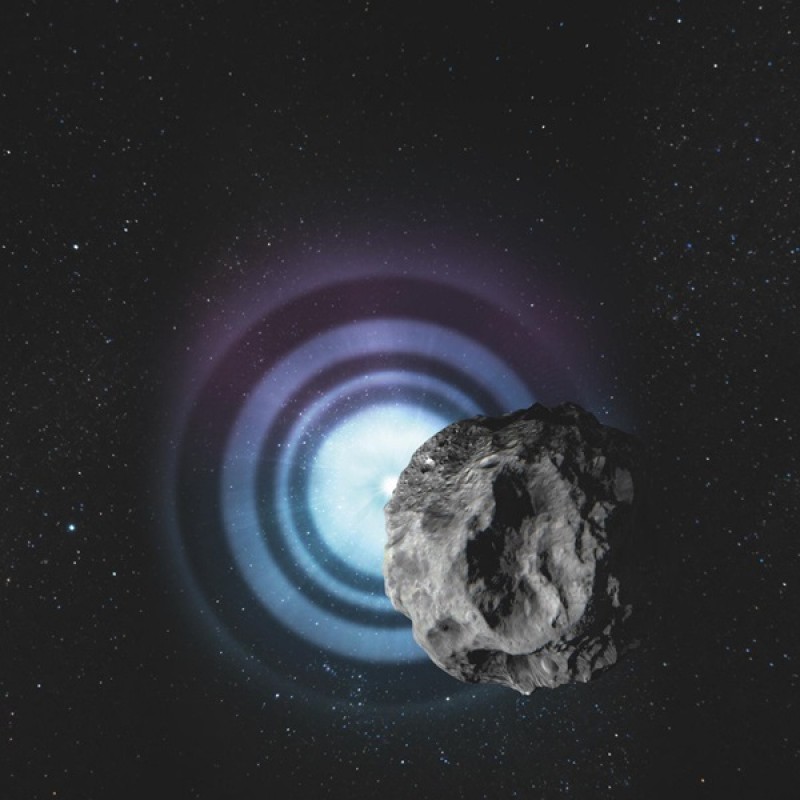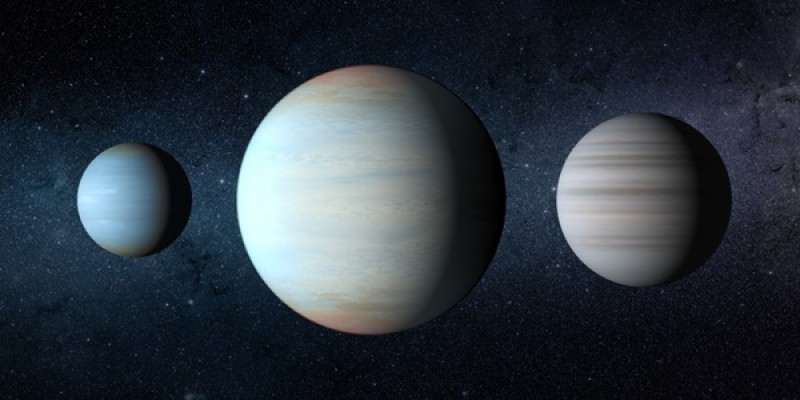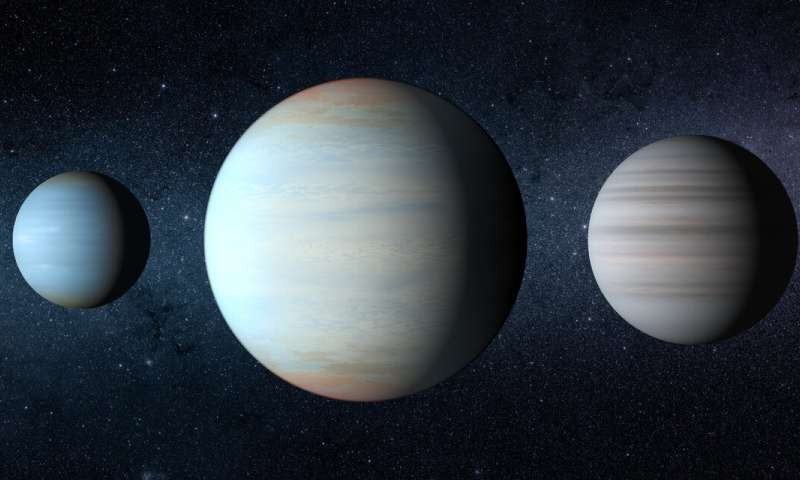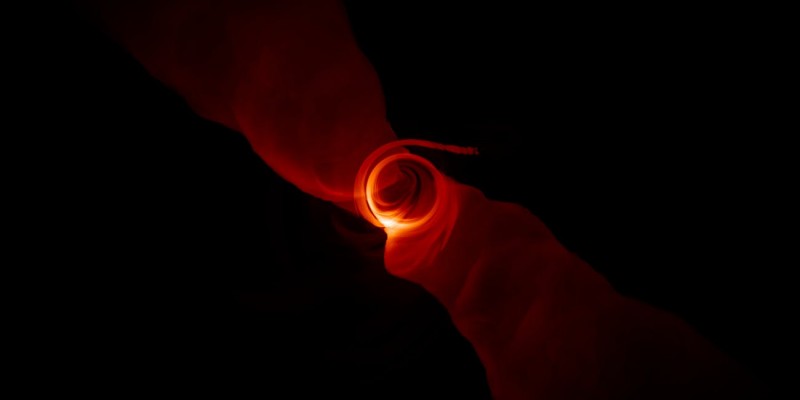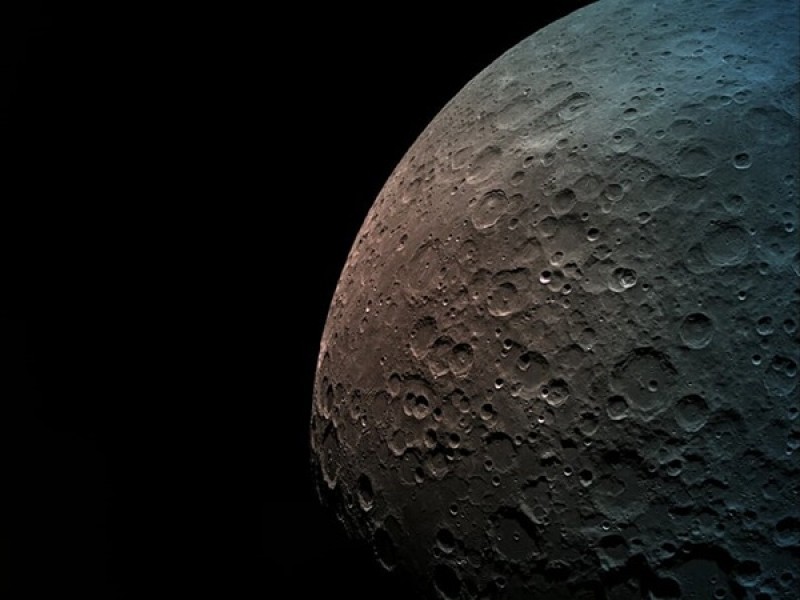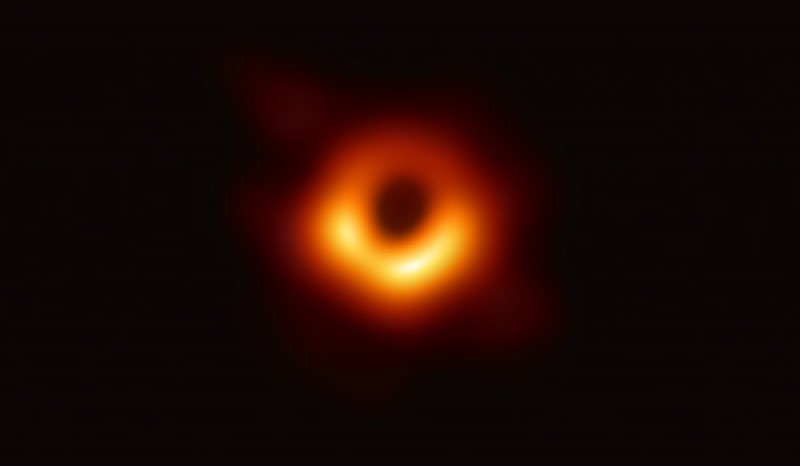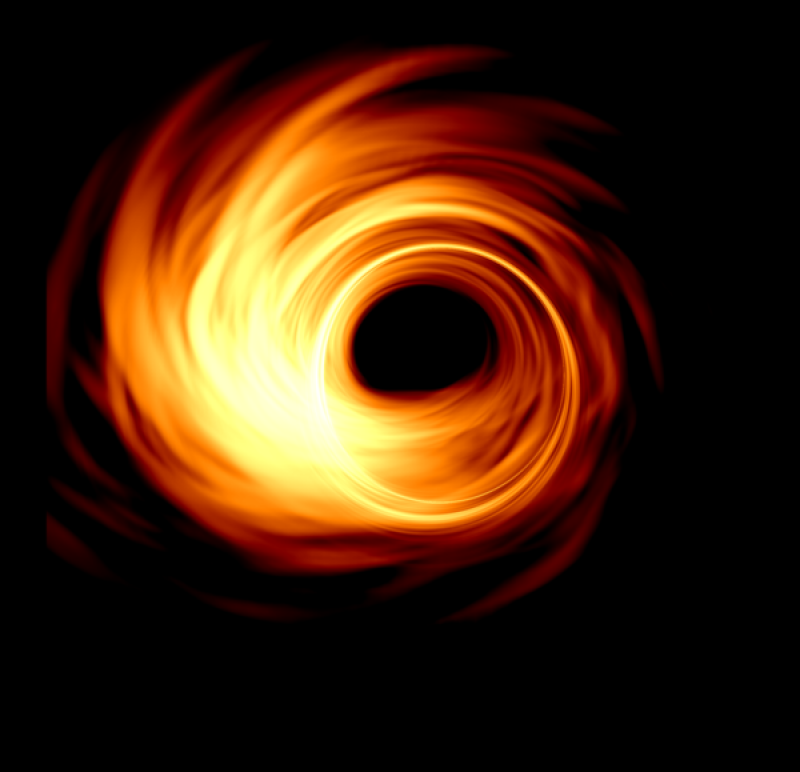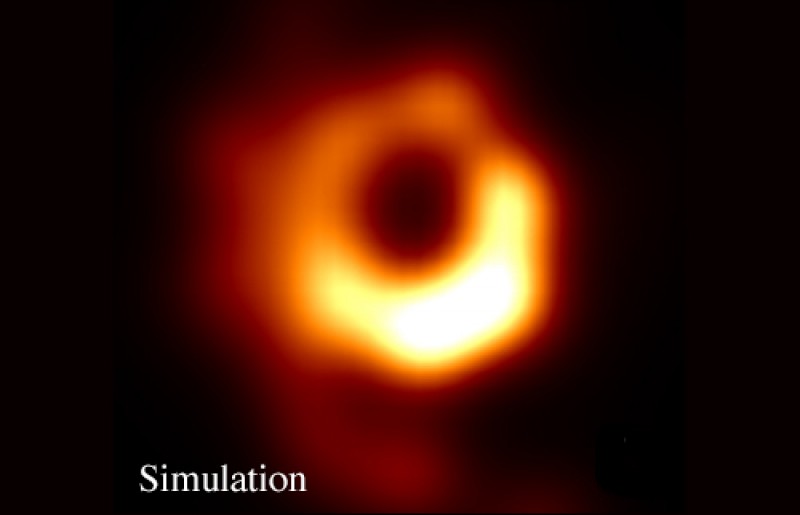News
Nearby asteroids reveal sizes of distant stars
Thursday, April 18th 2019 05:33 PM
Stars in the night sky appear as tiny points of light because they are too far away for your eyes to resolve. But even through powerful telescopes, stars still appear as mere points because they are too small to see their true physical size at vast distances. Now, a group of astronomers from over 20 different institutions has found a way to combine a unique telescope array with passing asteroids to measure the diameter of two distant stars, including the smallest star directly measured to date at just over twice the size of our Sun. Their work appeared April 15 in Nature Astronomy. And using this new information, astronomers can better refine their picture of the properties and life cycles of stars, which are the building blocks that make up our galaxy and every other galaxy in the universe.
How to measure a star
To measure the size of a star, the collaboration used events called occultations. An occultation occurs when one object — such as an asteroid or plane...
Read More
Read More
Third planet found hiding in ‘Tatooine’ star system
Wednesday, April 17th 2019 07:01 PM
Like the planet Tatooine from Star Wars, two suns — one bright, one dim and red— rise over the horizon of Kepler 47d. But unlike dry and sandy Tatooine, this planet’s surface is gassy and indistinct. The system also holds two smaller planets; one planet closer to the double suns, and one farther out. Both lack a solid surface. If you visited in a spaceship, all the planets would be easy to spot because they’re packed, along with their stars, into a space smaller than Earth’s orbit around the Sun. This week, astronomers on Earth announced that they’d only just now discovered the middle planet, making an already noteworthy system even more unique.
In fact, Kepler 47 is the only known multi-planet system orbiting a binary star. And it just solidified that place of honor by revealing a third planet hiding between the two already known planets. This tightly packed system has little in common with our solar system, and astronomers...
Read More
Read More
Astronomers discover third planet in the Kepler-47 circumbinary system
Tuesday, April 16th 2019 07:04 PM
Astronomers have discovered a third planet in the Kepler-47 system, securing the system's title as the most interesting of the binary-star worlds. Using data from NASA's Kepler space telescope, a team of researchers, led by astronomers at San Diego State University, detected the new Neptune-to-Saturn-size planet orbiting between two previously known planets.
With its three planets orbiting two suns, Kepler-47 is the only known multi-planet circumbinary system. Circumbinary planets are those that orbit two stars.
The planets in the Kepler-47 system were detected via the "transit method." If the orbital plane of the planet is aligned edge-on as seen from Earth, the planet can pass in front of the host stars, leading to a measurable decrease in the observed brightness. The new planet, dubbed Kepler-47d, was not detected earlier due to weak transit signals.
As is common with circumbinary planets, the alignment of the orbital planes of the planets change with t...
Read More
Read More
Astronomers Reveal 3 Things the Historic Black Hole Photo Confirms About Space
Friday, April 12th 2019 06:54 PM
The first-ever photo of a black hole was released on Wednesday, giving a physical form to an astronomical phenomenon that had previously only been hypothesized. Imaging a black hole for the first time was a major accomplishment — and an emotionally moving one for the scientists involved — but perhaps the most important part of this discovery isn’t what it revealed but what it confirmed.
In a series of six papers published Wednesday in The Astrophysical Journal Letters, over 200 scientists involved in the Event Horizon Telescope collaboration describe how they collected enough light from the black hole at the center of the galaxy Messier 87 to reveal humanity’s first look at a black hole.
The image of the black hole is just one artifact of this immense project. Through the image, astronomers got their first close-up glimpse at an astronomical phenomenon whose existence was predicted a century ago, allowing them to test their pre...
Read More
Read More
Israeli Beresheet mission will attempt to land on the Moon today
Thursday, April 11th 2019 06:57 PM
After a nearly seven-week adventure since its launch, the Israeli Beresheet spacecraftwill attempt make history today and touch down on the surface of the Moon at 10:25 p.m. Israel time (2:25 p.m. Central). It’s a monumental undertaking and if it succeeds, Beresheet and its creators will join the select ranks of those who have safely landed on the Moon – thus far only the United States, China, and the former Soviet Union.
NASA and its Deep Space Network are aiding the mission in tracking and communications. Beresheet plans to touch down in Mare Serenitatis, not far from NASA’s Apollo 15 and 17 landing sites, and is expected to send back pictures of its descent and arrival on the Moon. It will operate there for only two to three days before the sunlight grows too intense and overheats the tiny spacecraft, but that will be enough to cement its place in history.
Fashionably late
SpaceIL is a private company that built and operates the spacecra...
Read More
Read More
Event Horizon Telescope releases first ever black hole image
Wednesday, April 10th 2019 08:45 PM
On Wednesday, astronomers revealed the first image ever taken of a black hole, bringing a dramatic conclusion to a decades-long effort. The iconic image offers humanity its first glimpse at the gas and debris that swirl around its event horizon, the point beyond which material disappears forever. A favorite object of science fiction has finally been made real on screen.Their target was a nearby galaxy dubbed M87 and its supermassive black hole, which packs the mass of six and half billion suns. Despite its size, the black hole is so far from Earth – 53 million light-years – that capturing the image took a telescope the size of the planet.This monumental accomplishment was only possible thanks to the Event Horizon Telescope (EHT). The image data was taken back in 2017 but scientists have spent two years piecing it together. That’s because EHT is made of up eight independent observatories that are scattered across the globe, cooperating together to act as one enormous...
Read More
Read More
The Sky This Week from April 5 to 14
Monday, April 8th 2019 07:14 PM
Friday, April 5New Moon occurs at 4:50 a.m. EDT. At its New phase, the Moon crosses the sky with the Sun and so remains hidden in our star’s glare.Orion the Hunter stands out in the southwest as darkness falls this week. The conspicuous constellation appears slightly askew compared with its appearance in winter’s evening sky. Now, the three-star belt is aligned parallel to the horizon while blue-white Rigel hangs directly below the belt and ruddy Betelgeuse stands directly above.Saturday, April 6With an age of 4.5 billion years, “young” might not seem an appropriate word to describe our Moon. But tonight, you have an exceptional opportunity to see what astronomers call a “young Moon” — a slender crescent visible in the early evening sky. With New Moon having occurred yesterday morning, only 3 percent of our satellite’s disk appears illuminated after sunset tonight. (Tomorrow evening, a 7-percent-lit lunar crescent hangs noticeably highe...
Read More
Read More
The Event Horizon Telescope may soon release first-ever black hole image
Friday, April 5th 2019 10:33 PM
No, you can’t actually take a picture of a black hole. But astronomers have promised to do the next best thing: To image the seething chaos just outside the black hole, known as its event horizon. To capture this region, just on the cusp of the black hole itself, astronomers have had to link telescopes from across the globe and focus them on the closest, most massive black holes known: Sagittarius A* (pronounced “A-star”), which resides at the center of our own Milky Way galaxy, as well as the even larger supermassive black hole that sits at the center of nearby galaxy M87.The result, known as the Event Horizon Telescope (EHT) had its big observing run in April of 2017. Researchers warned that it would take time to piece together the data. And the team has repeatedly dropped hints that the results could be ready soon, only for the project to continue on. But based on their upcoming press event, set for April 10, it seems that time may have com...
Read More
Read More
How scientists think the first picture of a black hole may look
Thursday, April 4th 2019 06:02 PM
Humanity may soon get its first-ever picture of a black hole. Scientists with the Event Horizon Telescope (EHT) announced this week that they’ll be holding a press conference Wednesday, April 10, and they’re expected to reveal the results of their years-long quest to catch a black hole on camera.What that picture will look like is still unknown. But scientists think they have a pretty good idea of what a black hole should look like. For years, astronomers have been running simulations of black holes based on the laws of physics and a few basic assumptions about what goes on near a singularity. The resulting images offer a preview of what we might expect to see next week when the real thing gets unveiled.An Interstellar-quality black hole, these are not. But, they’re also some of the most realistic depictions of black holes we have right now.
Two simulations of M87; the image on the right is closer to what we might act...
Read More
Read More
Could Dark Matter Be Black Holes?
Wednesday, April 3rd 2019 07:16 PM
Dark matter is a thorn in astronomers’ collective side. This stuff, detectable only by its gravitational effect, appears to make up more than 80% of the universe’s matter. But what is it?
One contender making a comeback is primordial black holes. These objects might have been born in the earliest age of the universe, back when the cosmos was nothing but a hot plasmatic soup — mostly radiation, in fact. This radiation-rich plasma wasn’t uniform; its density fluctuated from patch to patch. If a patch were excessively dense compared to its surroundings, then it would naturally collapse and create a black hole, a primordial relic from long before the first star shone. If enough of these black holes were forged, the thinking goes, they could provide the invisible mass that forms the substrate of galaxies, galaxy clusters, and the cosmic web.
“I personally find it really cool that dark matter could be (even in part) made out of light that collapsed into blac...
Read More
Read More
